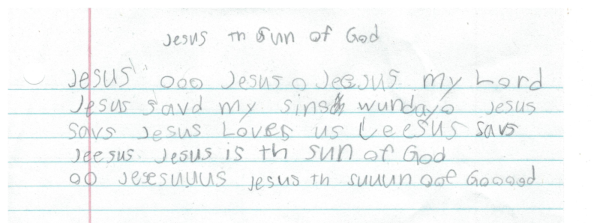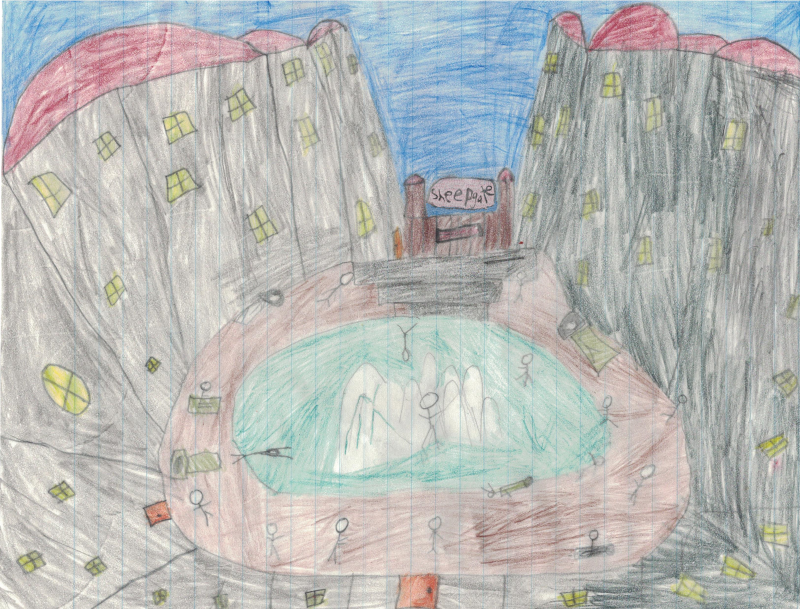Week 7
February 6, 7, 8, 9, 10, 11, 12
Reading Checklist
- Sunday: John 5-6
- Monday: John 7-8
- Tuesday: John 9-10
- Wednesday: John 11-12
- Thursday: John 13-14
- Friday: John 15-16
- Saturday: John 17-18
Illustrations
Notes
The Writer of the Gospel of John
- The Gospel of John was written between A.D. 85 and 90 by John the Beloved, the disciple of Jesus.
- This John is not to be confused with John the Baptist. - He was born in Bethsaida of Galilee to Zebedee, a fisherman, and Salome, whom some believe to be the sister of Mary the mother of Jesus.
- He had at least one brother, James, and they both joined their father in his trade of fishing.
- John does not use his own name when writing this gospel; instead he refers to himself as "the other disciple" or "the disciple whom Jesus loved." There is internal evidence that shows that John was the author as we can see from John 21:24, 25. (John 18:16; 20:2; 20:3; 20:4; 20:8)
- While exiled on the Island of Patmos, John recorded the book of Revelation.
- Irenaeus wrote that John was eventually released from Patmos and lived in Ephesus. It was during this time at Ephesus that Irenaeus claims John wrote the Gospel of John. In the meantime, the apostles had preached the Gospel, Paul and Peter had suffered martyrdom, and all the apostles had passed to their reward, and Jerusalem was destroyed by the Romans. Clement of Alexandria (c.150 - c. 215) says, "Last of all, John, observing that in the other Gospels those things were related that concerned the body of Christ, and being persuaded by his friends, also moved by the Spirit of God, wrote a spiritual Gospel."
The Purpose of the Gospel
Joh 20:30 And many other signs truly did Jesus in the presence of his disciples, which are not written in this book:
The purpose of John is to given an account of signs that proved that Jesus was the Messiah. The goal of John was that men might believe upon reading the accounts given within its pages.
Throughout the book we find the three key thoughts given here in John 20:30, 31; those thoughts are:
- signs,
- believing, and
- life.
We see many signs in the book of John that prove that Jesus was the Son of God, these signs produced faith (believing) in Him and His work, and the result was that those that believed received eternal life.
SIGNS: Jesus is The Master of…
There are nine distinct signs in John that prove Jesus to be Master of things that we face every day.
- #1 Quality Turned water into wine
- #2 Souls Cleansed the temple
- #3 Distance and Space Healed the Noble man's son
- #4 Time Healed the impotent man
- #5 Quantity Fed 5,000
- #6 Natural Law Walked on water
- #7 Misfortune Healed the blind man
- #8 Death Resurrected Lazarus
- #9 Love Helped the disciples catch the draught of fish
BELIEVING: The Gospel was written that men might believe
Believing means to trust and personally commit yourself to Christ. It could could also be said that believing is relying on Christ with conviction. The words that involve believing (i.e. faith and believe) are used 98 times in John.
LIFE: The Gospel was written that men might have life
When men see the signs and believe in them, then life is given. This life is more than natural life, but it is spiritual life—the life of Christ. This life is a restored fellowship between God and man (17:3), which was lost when Adam disobeyed God by eating the forbidden fruit. There are many references to this spiritual life in the Gospel of John, including 3:16; 3:36; 4:14; 5:24; 6:47; 8:12; 10:10; 11:25 and 12:25
Pictures of Jesus
Each of the 21 Chapters contains a striking portrayal of some aspect of the character or work of the Savior.
- CHAPTER ONE: He is the Son of God.
- CHAPTER TWO: He is the Son of Man. He appears as a guest at the marriage in Cana of Galilee.
- CHAPTER THREE: He is the Divine Teacher.
- CHAPTER FOUR: He is the Soul Winner.
- CHAPTER FIVE: He is the Great Physician. He is seen here bending in compassion over the sufferers at the pool. He shows His divine power by the instantaneous cure of a hopeless case.
- CHAPTER SIX: He is the Bread of Life. As we read this chapter we realize that without Him the souls perish of hunger.
- CHAPTER SEVEN: He is the Water of Life. From verse 37 we see that He is able to satisfy the thirsty heart.
- CHAPTER EIGHT: He is the Defender of the Weak. Here we have a scene showing His gallant defense of a woman that have been found guilty of breaking the law.
- CHAPTER NINE: He is the Light of the World. He demonstrates His right to this distinction by giving light to one who was born blind.
- CHAPTER TEN: He is the Good Shepherd. He watches over "the flock" with infinite care and gives His life for His sheep.
- CHAPTER ELEVEN: He is the Resurrection and the Life. He proves His right to this title by calling Lazarus from the tomb.
- CHAPTER TWELVE: He is the King. He rides into Jerusalem on Palm Sunday and is acclaimed King of Israel by the multitudes.
- CHAPTER THIRTEEN: He is the Lowly Servant. Here we have the marvelous scene of His condescension as He washes the disciples' feet.
- CHAPTER FOURTEEN: He is the Consoler. Although standing under the very shadow of His cross, in utter self-forgetfulness, He comforts the sorrowing disciples.
- CHAPTER FIFTEEN: He is the True Vine. We see Him as the source of all spiritual fruit.
- CHAPTER SIXTEEN: He is the Giver of the Spirit. On His departure He promised to send the comforter into the world.
- CHAPTER SEVENTEEN: He is the Great Intercessor. He offers up His wonderful intercessory prayers for the church.
- CHAPTER EIGHTEEN: He is the Model Sufferer. He submissively drinks the cup of woe pressed to His lips by the Father's hand.
- CHAPTER NINETEEN: He is the Uplifted Savior. He becomes obedient unto death, even the death of the cross.
- CHAPTER TWENTY: He is the Victory Over Death. As Christ arises from the grave we see that He has power over that final enemy.
- CHAPTER TWENTY-ONE: He is the Restorer of the Penitent. He welcomes wandering Peter back to the fold and commissions him to feed the sheep and lambs.











No Comments